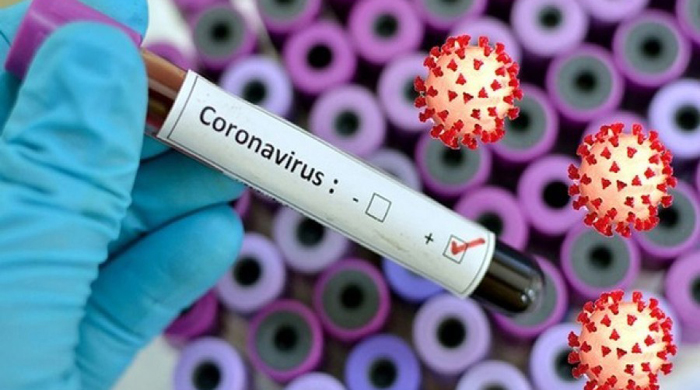The following is a brief roundup of some of the latest scientific studies on the novel coronavirus and efforts to find treatments and vaccines for COVID-19, the illness caused by the virus.
Coronavirus infection burden may shift to younger age groups
As the coronavirus infection rate in Washington State passed its peak, cases in people over age 60 fell 10 per cent, while infections among younger age groups rose steadily, researchers say. The nation's first known major outbreak took place at a nursing home in the state. Later in the outbreak, however, infections rates among those under age 40 increased from 20 per cent to 40 per cent of total cases, according to a report posted on Thursday without peer review on the medRxiv preprint server. "The fact that young people do not usually get as sick as older people and people with comorbidities is a double edged sword," co-author Dr Henry Kaplan of the Swedish Cancer Institute in Seattle told Reuters. "It also means that they are often unaware that they have the disease or unaware of the risk that they pose to others. As a result, there is a natural tendency to be lax about distancing, masks, and other precautions... While the younger patients will usually do fine with the disease, we need to ensure that they don't become the dominant vector in spreading it."
Cancer patients with COVID-19 at higher risk of death
Cancer patients who contract COVID-19 are at increased risk of dying within a month, new research shows, and treatment with a combination of malaria drug hydroxychloroquine and the antibiotic azithromycin may contribute to that added risk. Among 928 adults with COVID-19 and active or previous cancer, 13 per cent died within 30 days of their coronavirus diagnosis - twice the roughly 6.5 per cent rate seen among all infected patients worldwide, Dr. Jeremy Warner of Vanderbilt University in Nashville said on Thursday at the American Society of Clinical Oncology (ASCO) annual meeting, held virtually this year. Patients with progressing cancer were roughly five times more likely to die within 30 days than those in remission or with no evidence of disease. Other factors tied to a higher risk of death included older age, male gender, former smokers, additional illnesses, and use of hydroxychloroquine with azithromycin. However, the researchers emphasize other factors, such as how severely ill those who received the drugs may be, make it difficult to draw conclusions about their impact on the death rate. Neither the type of cancer, the therapy used to treat it, or recent surgery were associated with increased death risk, however, suggesting that certain treatments could continue during the pandemic "with extreme caution," Warner's team wrote on Thursday in The Lancet. "These findings have implications for patients and healthcare providers who will be confronted with difficult decisions during the (coronavirus) pandemic, such as whether to withhold or continue anticancer treatments, and whether to accelerate end-of-life planning under some circumstances."
Older, overweight people with diabetes at higher risk of swift death from coronavirus
A large study from France helps quantify the risks faced by people with diabetes and coronavirus infection. Among 1,317 hospitalized COVID-19 patients with diabetes, roughly one in 10 died within seven days and nearly a third required a ventilator for breathing assistance or died in that period. Fewer than one in five could be discharged within a week. The average patient in the study was age 70, and most had type 2 diabetes, researchers reported on Friday in Diabetologia. Poor outcomes were more common when patients were older, had diabetes complications or were overweight. While long-term blood sugar control was not linked with COVID-19 severity, being overweight was independently associated with the risk for needing mechanical ventilation or dying within seven days. Type 2 diabetes has long been associated with obesity. "Special attention" should be paid to protecting overweight elders with diabetes complications from "contamination" with the coronavirus, the researchers said. (https://bit.ly/2Apm4zO)
Higher COVID-19 infection rate among blacks linked to societal issues
Data from the coronavirus outbreak in Louisiana confirms a disproportionate infection rate and more deaths among blacks, but a lower percentage death rate, researchers at the Ochsner Health system found. Although 31 per cent of the more than half a million people in Ochsner's coverage area are black, non-Hispanic blacks accounted for 77 per cent of patients hospitalized for COVID-19 and 70.6 per cent of related deaths. But the death rate was actually higher in whites at 30.1 per centversus 21.6 per cent, the researchers reported on Wednesday in The New England Journal of Medicine. And after patients' condition at hospital admission plus social and demographic data were taken into account, blacks and non-Hispanic whites were equally likely to die from the virus, they found. To understand why more blacks become infected, "you have to think about what the circumstances are that increase their risk of exposure," study leader Dr. Eboni Price-Haywood told Reuters. "In New Orleans and surrounding areas, our economy is based on the service industry and the tourist industry, where the vast majority of people working in this field are minority populations," she said. Racial disparity in COVID-19 may also reflect differences in rates of chronic conditions that increase the risk of severe illness, such as obesity, heart disease or diabetes. "The disparities in health that we see among the population is something we've known for decades," said Price-Haywood. "COVID-19 just opened the door to a conversation about something we already know."
সংবাদ শিরোনাম
Coronavirus infection rate may shift toward younger ages
- News Desk :
- ২০২০-০৫-৩০ ১২:৪০:০৩

সর্বশেষ সংবাদ










.jpeg)


